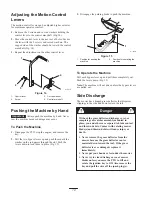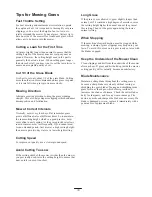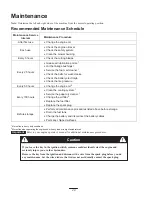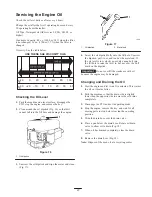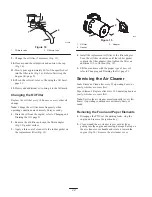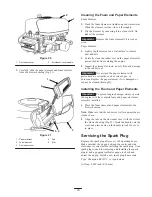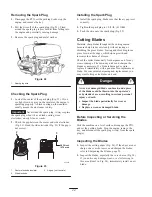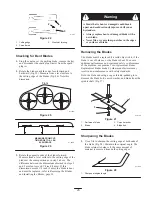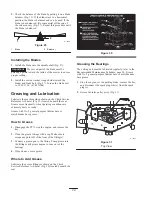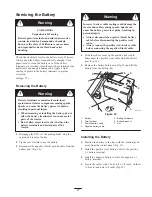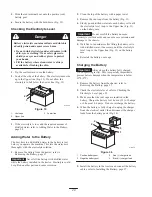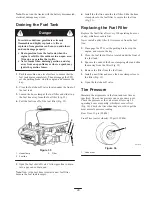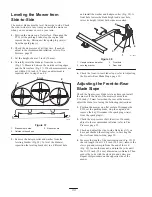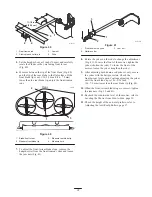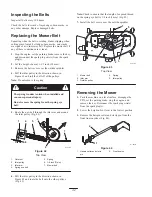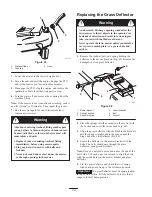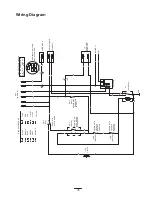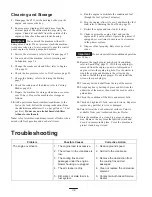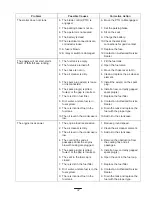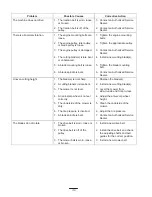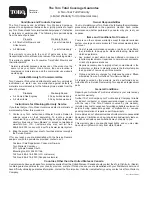
32
Inspecting the Belts
Inspect all belts every 100 hours.
Check the belts for cracks, frayed edges, burn marks, or
any other damage. Replace damaged belts.
Replacing the Mower Belt
Squealing when the belt is rotating, blades slipping when
cutting grass, frayed belt edges, burn marks, and cracks
are signs of a worn mower belt. Replace the mower belt if
any of these conditions are evident.
1. Stop the engine, set the parking brake, remove the key,
and disconnect the spark plug wire(s) from the spark
plug(s).
2. Set the height-of-cut at 1-1/2 inch (38 mm).
3. Remove the belt covers over the outside spindles.
4. Pull the idler pulley in the direction shown in
Figure 42 and roll the belt off of the pulleys.
Note: Do not remove the spring.
The spring is under tension when installed and
can cause personal injury.
Do not remove the spring from the spring eye
bolt.
Caution
5. Route the new belt through the idler arm and around
the idler pulley (Fig. 42).
2
1
4
3
7
5
6
m–4197
Figure 42
Top View
1.
Outer nut
2.
Idler pulley
3.
Idler arm
4.
Spring eye bolt
5.
Spring
6.
1/8 inch
〈
3 mm)
7.
Mower belt
6. Pull the idler pulley in the direction shown in
Figure 42 and route the belt onto the other pulleys
(Fig. 43).
Note: Check to ensure that the length of exposed thread
on the spring eye bolt is 1/8 inch (3 mm) (Fig. 42).
7. Install the belt covers over the outside spindles.
1
m–5157
2 3
4
5
Figure 43
Top View
1.
Mower belt
2.
Idler arm
3.
Outside pulley
4.
Spring
5.
Idler pulley
Removing the Mower
1. Park the machine on a level surface, disengage the
PTO, set the parking brake, stop the engine, and
remove the key. Disconnect the spark plug wire(s)
from the spark plug(s).
2. Lower the height-of-cut lever to the lowest position.
3. Remove the hairpin cotter and clevis pin from the
front trunion yokes (Fig. 44).
m–5178
1
2
Figure 44
1.
Hairpin cotter and clevis
pin
2.
Front trunion

